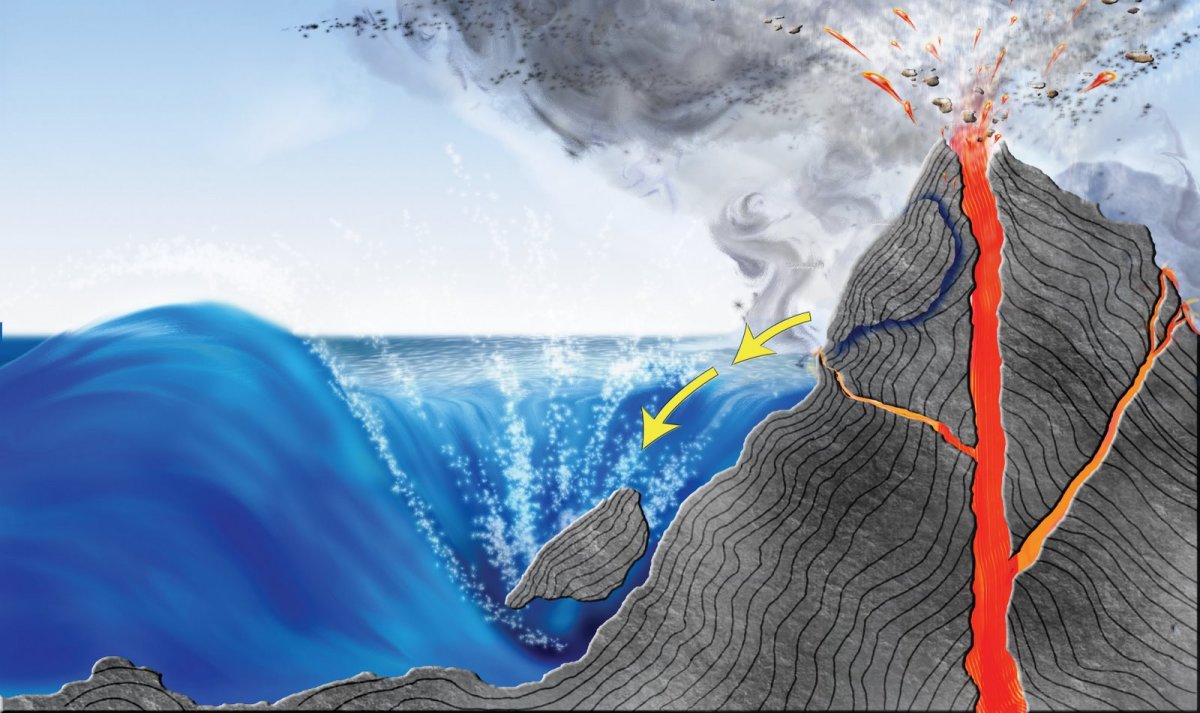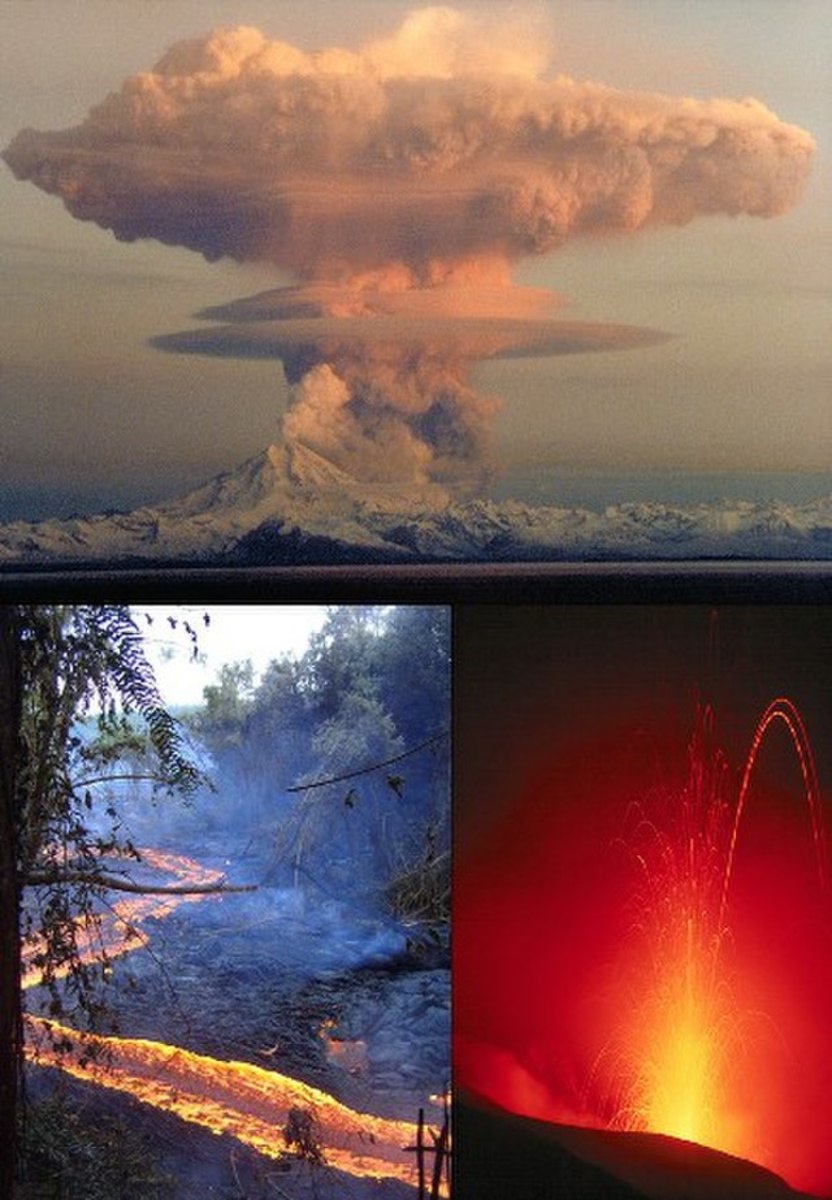Types of Volcanic Cones
Cone-Shaped Volcano
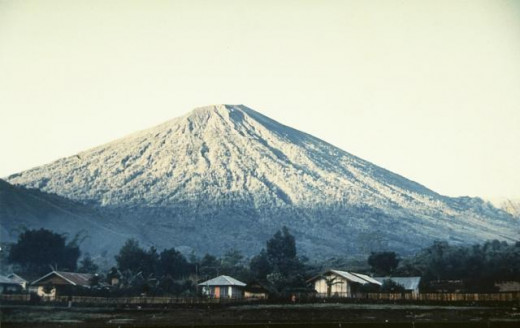
What are Volcanic Cones?
Volcanic cones refer to the physical characteristics acquired by volcanoes during their formations. The process by which volcanoes form makes them acquire the form of a cylindrical cone. During their formation, the lava ejected builds up around the volcanic vent, more at the edges of the vent than at the farther limits, forming a base on which successive layers of lava will accumulate to form what at the end of the development resembles a cone-shaped mountain.
Most volcanoes, although not all, resemble a cone. Some volcanoes may grow to become cone-shaped mountains with a gentle slope, while others, may develop a steeper slope with a higher degree of steepness. The degree of steepness depends on the viscosity of lava, which is determined by temperature and the amount of silica contained. If the viscosity of lava is low, it will flow gently, forming a shallow-shaped cone, but is the viscosity of lava is high, it will harden, forming layer after layer around the volcanic vent, resulting in a taller cone-shaped volcano. Volcanic cones differ in type, depending on the size and nature of the ejected materials during an eruption.
Mount Rainier in Washington
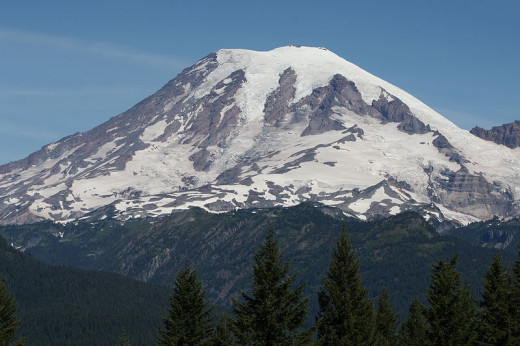
Stratocones
Stratocones, also known as composite volcanoes, are formed from the constant build-up of high viscosity lava. During their formation, basaltic lava eruptions flow gently and harden promptly. In each eruption, high viscosity lava provides a thick basaltic layer upon which successive basalt layers pile up. Over time, this process contributes to give the tall and expanded shape characteristic of stratocone volcanoes.
Stratocones are made up of many layers of hardened lava, tephra, volcanic ash and pumice. The magma that composes this lava is usually felsic, containing high concentrations of silica. This makes this lava sluggish while displacing itself on the surface of the Earth. The extended displacement of felsic lava flows are uncommon; however, there have been instances when felsic lava has travelled nearly 16 km (10 miles).
Explosive Eruption
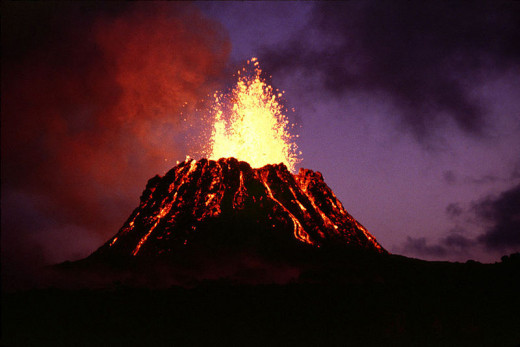
Spatter Cones
Spatter cones are low steep-sided mountains made of fused fragments. Spatter cones may form along long fissures on the ground or around a central volcanic vent. A spatter cone is made up of molten lava that has accumulated enough quantities of gases in its interior preventing the formation of liquid lava flow; instead, lava is ejected explosively into the air and turned into small chunks of spatter ranging from (1-50 cm) (0.4-20 inches) in size. When the spatter falls back to the ground, they bind together, creating steep-sided mountains around individual volcanic vents.
Spatter cones are typically volcanoes formed from magma with a low viscosity content. Spatter cones are characteristics of volcanoes that have ejected magma that is highly liquid, such as the one observed in Hawaiian volcanoes. The almost liquid characteristic of spatter makes it easy for them to bind to underlying lava fragments when landing on around their ejecting volcanic vent.
Interaction Between Magma and Water
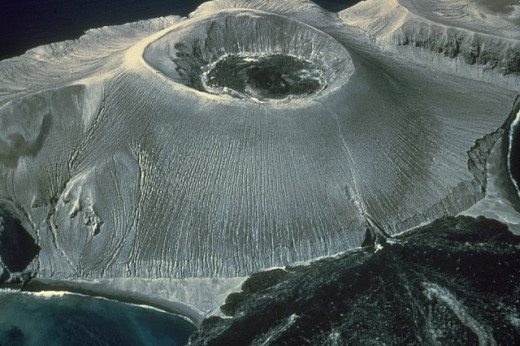
Ash Cones
Ash cones are small volcanoes of approximately 100-300 meters (328-984 ft.) tall by 1-1.5 km (0.62-0.93 miles) in diameter. An ash cone is composed of small particles of the size of sand. They are formed by the interaction between magma and water, such as those occurring in the open ocean. The interaction between magma and water, along with expanding steam produce the ejection of ash. The ash that falls after an eruption forms an ash cone.
The ash particles form due to thermal contraction of pyroclastic particles when in contact with water, either groundwater or sea water. The volcanic matter that forms this type of volcano includes magma, gases and steam. The product of this type of matter is ash.
Made Entirely of Cinder
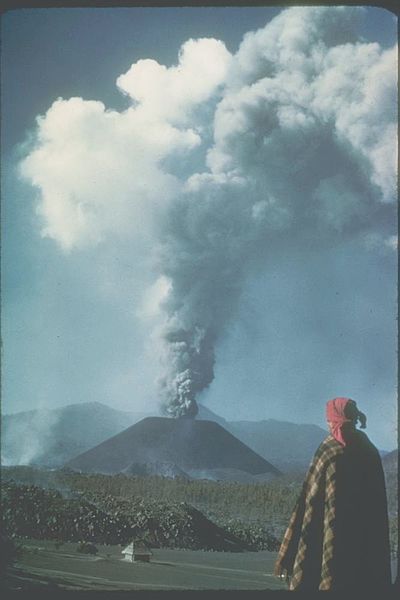
Cinder Cones
Cinder cones are the most common types of volcanoes, and usually don't grow above 300 meters (984 ft.) tall. They form almost exclusively from basaltic lava known as tephra. When the lava, which contains gases within, is ejected into the air, it breaks down into small fragments that acquire a solid state and fall down as cinders, accumulating themselves around the vent, and forming an oval cone. Cinder cones typically develop a bowl-shaped crater. Twin cinders cones may be formed when the location of the volcanic vent is changed due to the formation of another vent. Cinder cones often grow in clusters close to the environs of strato and shield volcanoes.
Basaltic lava, tephra, gases and cinders (pyroclastic, pumice) are the main ejected volcanic constituents responsible for the formation of cinder cones. Paricutin volcano, in Mexico, is a cinder volcano. After the first eruption, it took only five days for the volcano to grow to about 90 meters (300 ft.) high.
The following video illustrates how a cinder cone volcano is formed. The formation of Paricutin provided scientists from around the world the opportunity to study for the first time the complete cycle by which a volcano is formed.
The Birth of a Cinder Cone Volcano
Links to volcano sites
Percentage of People Who Have Heard Stories About Volcanoes
Do you Know Someone Who Has Ever Witnessed a Volcanic Event?
© 2012 Jose Juan Gutierrez

